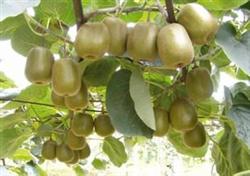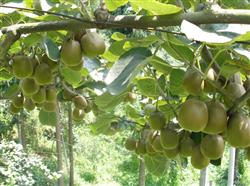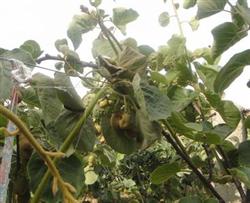Key points of management techniques of kiwifruit in summer

1. The main reasons for leaf wilting of anti-wilting kiwifruit during high temperature in summer are as follows: one is high temperature and drought, which mostly occurs from 12:00 to 4 pm in sunny days, and recovers sooner or later, usually in a large area. This kind of situation should be irrigated in time in the morning and evening, and the wilting can be relieved. Second, the root system suffers from root rot and root-knot nematode disease, which leads to pathological wilting caused by the destruction of root function. The performance was the most serious at noon, and lasted for a long time, and even showed symptoms sooner or later, and showed sporadic characteristics. Once it is found that the root should be planed and examined, if it is really harmful to diseases and insect pests, the branches and leaves should be cut off properly, some or all of the fruits should be removed, and agricultural resistance 120 and fungicide should be selected to irrigate the roots. 2. Sunburn prevention is a common physiological disease of kiwifruit in summer. In addition to adopting preventive measures such as irrigation in high temperature period, reasonable summer shearing, maintaining suitable leaf-fruit ratio and controlling fruit load, spraying Merrill Lynch efficient calcium twice in young fruit stage (15-20 days apart), bagging the exposed fruit one by one can also effectively prevent sunburn. 3. It is easy to grow and shade the fruit trees in the full fruiting period, ignoring the sprouting, partial or heavy application of nitrogen fertilizer. In summer, the buds were lightly wiped and the hearts were picked again and again, leaving 3-4 leaves on the secondary branches and 1-2 leaves on the third branches after the first pick. Open the light path, pick the hearts of the outer branches (the second to the iron wire) and the 2-3 leaves of the fruit branches repeatedly to remove the vegetative branches. The weak fruiting branches and temporary fruiting branches occurred under the shelf were truncated and thinned. Remove the old leaves and yellow leaves. By taking the above measures, we can achieve the high-yield garden appearance of "no winding on the tree, a gap between the rows, the shadow of flowers under the tree and sunshine on the branches".
- Prev

High-yield techniques of kiwifruit
First, varieties should be selected with large fruit shape, good quality, strong disease resistance and good yield, such as Hayward, Allison, Bruno and so on. Second, choose to build kiwifruit garden in a cool and humid environment, afraid of drought, waterlogging, wind and cold, but not resistant to the late frost of early spring, so mountain kiwifruit orchards should be chosen in the leeward.
- Next

Beware of kiwifruit burning in high temperature
In recent years, due to the high efficiency of Actinidia deliciosa, our fruit farmers compete for introduction, but because we have done little research on it, we have taken a lot of detours. Kiwifruit likes water and is afraid of waterlogging, light and exposure, so its natural distribution is mostly in places that avoid shade and damp, but there are almost no sunny and dry areas. Zhouzhi County has been around for more than 20 years.
Related
- Moge, come on! The staff of the peasant association in the producing area of cantaloupe were frightened when the crowd gathered.
- Causes and Solutions of low Fruit setting rate of Apple
- Symptoms and control measures of passion fruit virus disease
- Fruit growing lesson: how do apple orchards keep high yields?
- Can you build orchards in the mountains? What are the pros and cons?
- How to manage the coloring period of Crisson grape?
- This paper introduces the processing technology of two kinds of fig products.
- How much is a month for retired teachers in rural areas by 2020?
- How can strawberry planting increase sugar content? We should pay attention to management in many aspects.
- What are the cultivation techniques on how to improve the yield of golden fruit?

